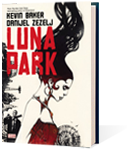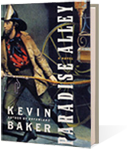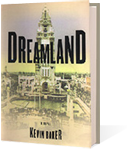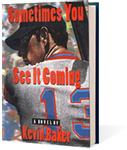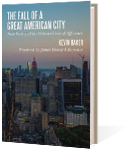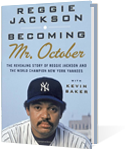Lisa Phillips smiles fondly at the pocket parking lot at 235 Bowery, situated at the end of Prince Street and sandwiched between a restaurant-supply store and one of Manhattan’s last genuine flophouses. Phillips is the director of the New Museum of Contemporary Art, and what she sees is not the mundane present but the glimmering future, a seven-story $35-million building that will most likely be the largest cultural institution ever erected on the Bowery.
”We’re trailblazers,” Phillips asserts, referring not only to the art that the New Museum likes to exhibit, but also to its history for staking out space whose currency is on the rise. After starting in 1977 in a tiny space on Hudson Street and then moving into a few rooms of the New School, the museum relocated to its current location at 583 Broadway, between Houston and Prince Streets, in 1983 — just as the SoHo art scene approached its zenith.
Its next move raises the inevitable question: could this really augur a similar ascent (or descent) into SoHo trendiness for the Bowery? More important, it speaks to the continuing debate over whether the contemporary city can exist as something more than a vertical suburb. Is Starbucks the future of the Bowery? Or is it the lively, multipurpose, multiethnic neighborhood that has been promised before, in so many places, during New York’s many waves of gentrification, yet which never quite seems to materialize?
Actually, in many ways, the Bowery is that neighborhood right now. It is an avenue unlike any other in New York, a hodgepodge of business and bohemia that runs through or alongside some of the city’s most venerable and dynamic neighborhoods — Chinatown, the Lower East Side, SoHo, NoLita, the East Village — without really seeming to be a part of any of them. The Bowery is its own New York, at any moment a palimpsest of nearly every image, good and bad, that has defined the city.
It is one of Manhattan’s last industrial markets, still the place to go when you want to buy a lamp, or a dough retarder, or maybe a life-size resin-based caricature of an Italian waiter. It is still a place where you’ll see grizzled men sitting on the sidewalk outside the avenue’s few remaining flophouses, fiddling with a cigarette or a bagged can of beer. And it is also a place of stunning, unexpected beauty, of striated, pink and blue sunsets glimpsed from its broad intersection with Delancey.
And it is, as well, a place where beauty and decay are conjoined. On the Bowery you can still find the grand, picturesque ruins that dominated the Lower East Side during the 70’s. Jutting out from several razed lots on the block between Houston and East First Street is the high brick tenement that used to be McGurk’s Suicide Hall: a bar/brothel that became notorious 100 years ago as a place where despondent prostitutes went to kill themselves, sometimes by drinking carbolic acid. Just to the east of the old McGurk’s is a partly burned-out school where groups of anarchists are now rumored to meet. Just to the south is perhaps the last building to be used as part of the jolly German beer gardens that dominated the area in the 1820’s, where families flocked to listen to music and be served meals and nickel beers by teenage waitresses wearing short dresses and red boots with bells on them. Now the lot at Houston is a lush tangle of a community garden, where on a recent evening people sat sipping wine and talking quietly just feet from the noisy thoroughfare. It is the Bowery in all of its back pages, turned all the way to its rural antecedents — and all on a single street corner.
Perhaps not for long. Real-estate developers — so often the final social arbiters in New York — seem to be betting that the Bowery’s long equilibrium is at last about to break. The community garden will stay, but the building that used to be McGurk’s — along with the abandoned school and the beer hall — will be put to the wrecker’s ball soon, to be replaced with an enormous residential-business complex. Smaller residential projects are going up both south and north of Houston, and loft spaces are renting for $5,000 a month. A new, strikingly ugly set of condos on the corner of the Bowery and Bond Street promises ”Downtown Chic Meets Luxury Loft Living” — starting at $1.335 million.
The very notion of the Bowery as chic — not to mention $1.3 million chic — will be enough to drop the jaws of New Yorkers of a certain age. No other street has been so synonymous with urban danger. And no other street has been so influential in shaping the city’s self-image. New Yorkers have long reveled in the Bowery’s seamy side, taking pleasure in both its allure for unsuspecting greenhorns and the proof it provides of their own toughness. If the Bowery could talk, it would call you ”Bub,” or maybe ”Pally.”
The city’s meanest street actually began life as a deer path, and its name comes from bowerij, Dutch for ”farm”; specifically the farm of Peter Stuyvesant, who bought most of the surrounding land in 1651. By the mid-19th century, though, it was contending with Broadway to be the city’s premier entertainment district. The Bowery was dotted with early vaudeville theaters, and by the Civil War, the theaters had been joined by nickel museums, imitators of Barnum’s that featured exotic animals, freak shows, manufactured oddities and tableaux vivants with an emphasis on women in various stages of undress.
Before long, though, the beer gardens were overwhelmed by street toughs and gangs, then replaced by dives, some of which didn’t even provide glasses, just rubber hoses through which, for three cents, customers could suck all the rotgut liquor they wanted until they had to come up for air. In 1878, an elevated rail line was erected down the middle of the broad avenue. Oil, ashes and hot coals spilled down on the pedestrians below, and even the streetwalkers stayed away. The Bowery became a shadowy realm under the el — ”the capital of night,” as it was described by its most elegiac historian, Luc Sante, in his book ”Low Life” — an almost exclusively male preserve where men went when they had no place else to go. These men weren’t called ”homeless” yet, but ”Bowery bums,” and by 1907 there were an estimated 25,000 of them living in the innumerable flophouses, missions and one-night cheap hotels under the rumbling trains.
Yet the Bowery was not, with notable exceptions like McGurk’s, a truly dangerous place; more sad and sleazy — and colorful. Here came to be gathered nearly all of Manhattan’s pawnshops, along with most of its tattoo parlors, its barber colleges and flea circuses and a hive of eccentric characters celebrated by the Aschcan painters and by Joseph Mitchell in the pages of The New Yorker.
Then, in 1955, the elevated rail line came down, and the Bowery stood blinking in the full light of day for the first time in nearly eight decades. The flophouses and bars slowly began to vanish, replaced by the restaurant-supply wholesalers — and by a Renaissance’s worth of artists. These included the likes of Mark Rothko, Roy Lichtenstein, Robert Frank, Brice Marden, Billy Sullivan and John Copeland — with any number of writers, poets and other artists thrown into the mix. The poet John Giorno, who has been living at 222 Bowery since 1962, remembers a birthday party that included Andy Warhol, Jim Rosenquist, Robert Rauschenberg, Frank O’Hara, John Ashbery, Merce Cunningham, Tricia Brown and Jasper Johns — ”and that was just ordinary!”
In the world of New York real estate, artists are usually the shock troops, the first wave of more ”desirable” tenants reclaiming a decaying neighborhood. After 50 years, though, the Bowery still resists the sort of gentrification that has overwhelmed SoHo or Chelsea. How can this be?
One answer is surely physical. Like most of New York, the Bowery is much cleaner than it used to be, but it is still an ungainly street, singularly devoid of shade. An informal survey counted only 19 trees, many of them little more than saplings. And in its northern reaches, particularly, the Bowery is almost as broad and as busy as a highway. Trucks rumble constantly up and down its six lanes, either serving the avenue’s many wholesalers or on their way somewhere else. And if geography is destiny, then the Bowery will never change. This is where streets go to die. Prince and Spring Streets from the west; Rivington, Stanton and First Streets from the east. All come to dead ends here, creating the impression that the Bowery is somehow cosmically misaligned — an ineluctable border area, permanently detached from any of the neighborhoods surrounding it.
Or perhaps there’s a simpler reason that the Bowery has remained the Bowery. Modern cities developed for the most practical of reasons, as marketplaces of goods, services and ideas. It is only when the markets leave that cities and neighborhoods begin casting around existentially for reasons to exist. On the Bowery, neither the industrial markets nor the artists ever left. The street remained more or less content unto itself. In a way, the Bowery is the only part of the ”real” city left in Manhattan.
What will happen if the awful pressure of Manhattan real-estate values finally persuades the restaurant suppliers to sell or lease out their buildings, just as the most of the West Side egg and meat markets have given way to the city’s inexhaustible demand for residential space?
Maya Lin, who for eight years worked out of a fifth-story walk-up on the Bowery, says, ”SoHo worked out to be — what can you say? — the perfect European shopping mall.” But she is more optimistic about the Bowery’s future, thanks in part to the presence of Chinatown. The Bowery begins in the shadow of Confucius’s statue down in Chatham Square, after all, and the Chinatown Bowery, south of Delancey, has a distinctly more human, working- and middle-class neighborhood feel to it.
A case in point is Stanford White’s huge, beautiful Bowery Savings Bank, on the corner of Bowery and Grand Street. A landmarked building, it has a glittering main lobby that has been made over into Capitale restaurant, which, Time Out magazine gushes, is the city’s ”most jaw-dropping venue for a meal.” Here, where immigrants once brought their hard-earned savings, wealthy diners pay $33 for a plate of grilled bison in chocolate oil, amid the gilded Corinthian columns, Venetian glass and chip mosaic marble floors. But outside — occupying the space around the old bank like medieval shops along the walls of a castle keep — is a warren of small Chinese-American businesses: produce stands, flower sellers, children’s clothing stores, cosmeticians, chiropractors, herbalists, travel agents and computer repairmen — among many others. Here, perhaps, in the advance of New York’s most enduring ethnic community, can be found the elements of a new equilibrium.
North of Delancey, where the ambience of the Bowery changes considerably, the avenue is being transformed at the street level — in a supreme irony — by bars. Once the avenue’s scourge, they now serve as its validation. They tend to be loud, with the usual contingent of banished smokers spilling out onto the sidewalk, and these days they are augmented by restaurants serving everything from Mongolian barbecue to Polynesian food. There is even a tattoo parlor again — 334 Bowery Tattoo — though this is not some grimy, Reginald Marsh joint, but a spacious shop with an emphasis on hygiene, its fluorescent lights shining off cases full of things you can poke through your tongue.
The new watering holes range from the likes of Remote, where you can check out the rest of the crowd on your very own Cocktail Console video monitor; to the B-Bar, a cleverly converted gas station near the northern end of the Bowery where on any given night much of the crowd is likely to be wearing name tags; to Mission, which is easily the most pretentious of the new Bowery bars. Mission keeps a velvet rope out front, charges $9 for a gin and tonic and claims to have played host to celebrities ”from Lisa Marie Presley to Posh Spice, Debbie Harry, P. Diddy and Mike Tyson. ”
The Mission’s name, of course, is a sardonic take on its neighbor, the Bowery Mission. The reference is not appreciated by Timothy Weal, the friendly, earnest operations manager of the Bowery Mission, who looks much too young to have been, as he describes it, ”an alcoholic for 27 years.” The Bowery Mission, which is just two doors down from the New Museum’s future home, is still doing what is has been doing for 125 years: caring for derelict and alcoholic men. To that purpose it conducts religious services, runs a 25-bed shelter and provides showers, medical services, counseling, job training and as many as 600 meals a day to the homeless.
A few of the Mission’s transient guests often cluster on the sidewalk in the early evening, but they are a quiet and unobtrusive presence there. ”I can tell you this personally about homeless men — we’re more afraid of you than you are of us,” says Weal, who acknowledges that all but six or seven of the Bowery’s once abundant flophouses and missions are gone now and welcomes the changes in the neighborhood — though he does not believe the Bowery will ever change in any fundamental way.
”I don’t think the Bowery Mission is going to go anyplace,” he says. ”Homeless men go where they need to go, and in this neighborhood, even though you didn’t know it, there are 18 different places to eat. You’ll find them when you’re hungry,” he explains. ”I think we’ll coexist. I really think we will.”
Lisa Phillips agrees and says that her staff is already exploring joint programs the museum could undertake. The Sunshine Hotel, just north of the New Museum, may prove to be a more difficult neighbor. A recent visit to the old flophouse uncovered a scene from the bad, old Bowery — a darkened staircase leading up to a cage door, three derelict men in between, smoking something on the narrow stairs. But Phillips says that she is looking into programs with the Sunshine too. She compares the New Museum with Barnum’s nickel museums, and she may be right. ”Last year,” she says, ”we had an exhibit that was a gigantic, 40-foot-long contraption that simulated the human digestive system. It was very, very popular, it got fed two to three times a day, and it eliminated two to three times a day, and in addition to being a very good piece of art, it was also an attraction.”
Bob Holman has anticipated the New Museum’s experiment for a year and a half, trying to make it on the Bowery by galvanizing populist traditions of art and entertainment. Holman is the owner of the Bowery Poetry Club, a bar and coffeehouse and poetry-slam arena that occupies one of the few shady nooks of the Bowery at the foot of First Street.
”I want everything to be here,” says Holman, a stocky man with gelled hair and thick-framed glasses who tends to speak in long, mellow, poetic riffs that trail off ecstatically. ”This wants to be an intersection, a collision of cultures.” Holman first encountered the Bowery in 1966, as an 18-year-old Columbia student trying to sell a suit to a used clothing shop. He still remembers the smell of the street at the time — ”Uriniferous!” — but ever since, he says, ”Downtown has been my life.” He doesn’t know if a new, upscale Bowery has space for a poetry cafe, but he sees his establishment as a vital link, as ”a continuation of the beat coffeehouses, the Yiddish-speaking socialists of the Lower East Side,” and he is willing to struggle to preserve it.
”This is the land grab,” he says. ”This is that moment we’re seeing here. I feel really lucky to be here, to be able to give it a shot,” he adds. ”Which direction is the Bowery going? All directions is where it’s going now.”

